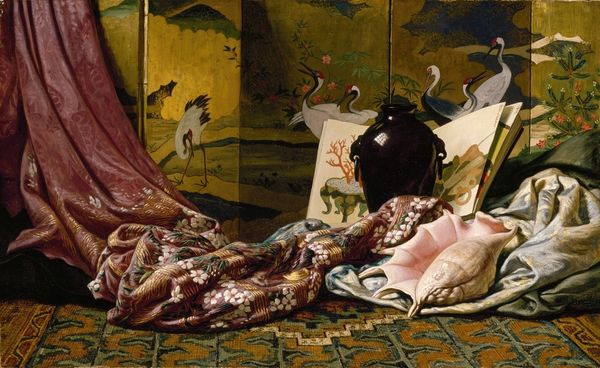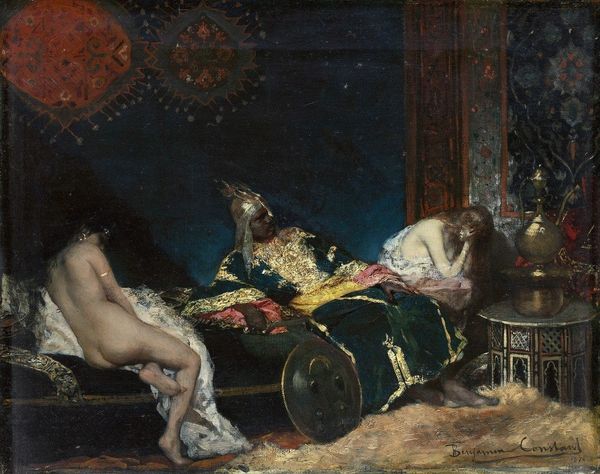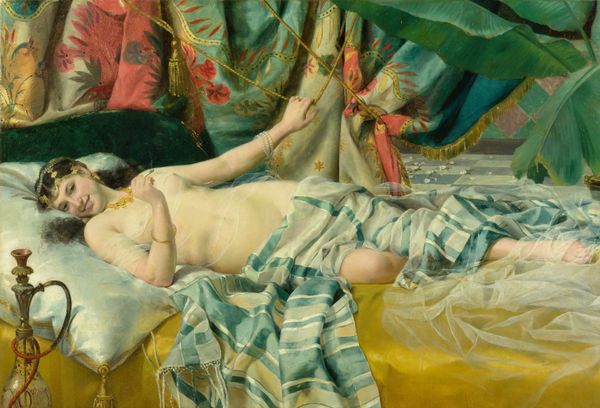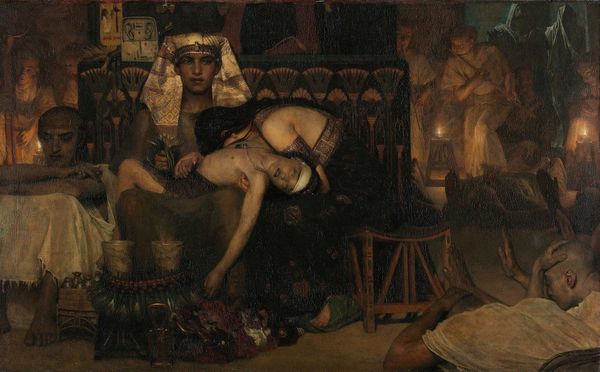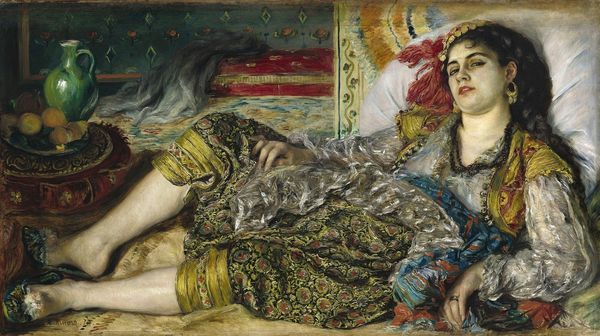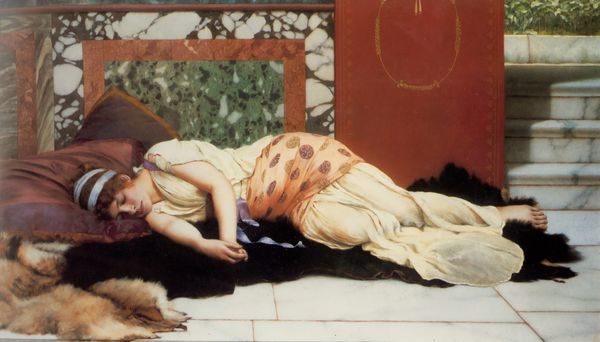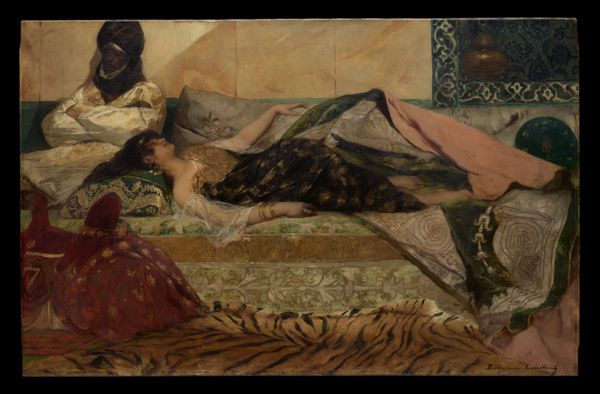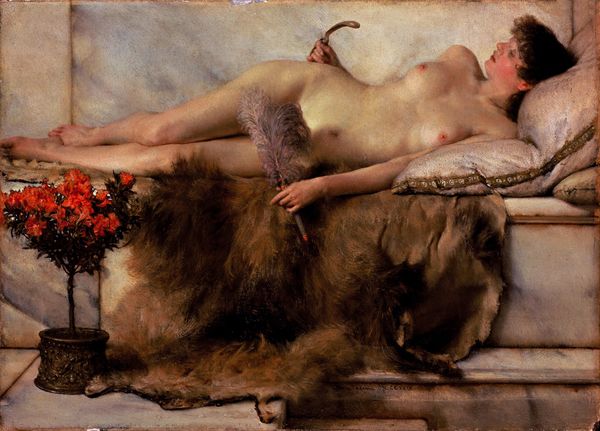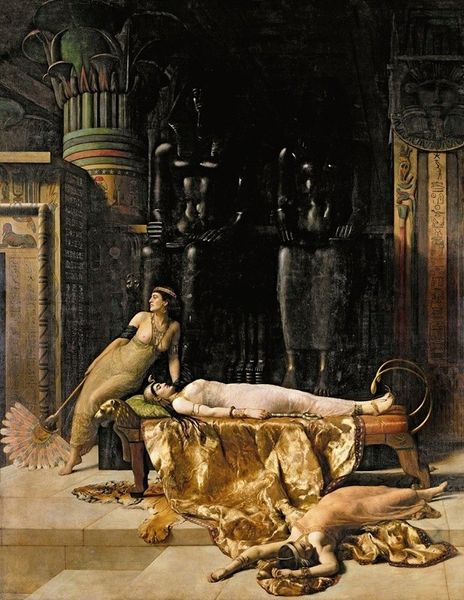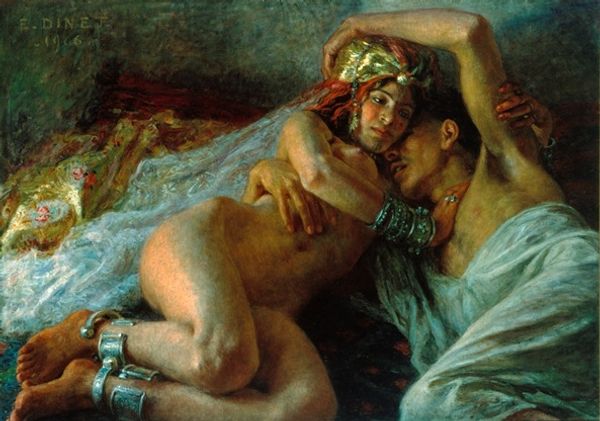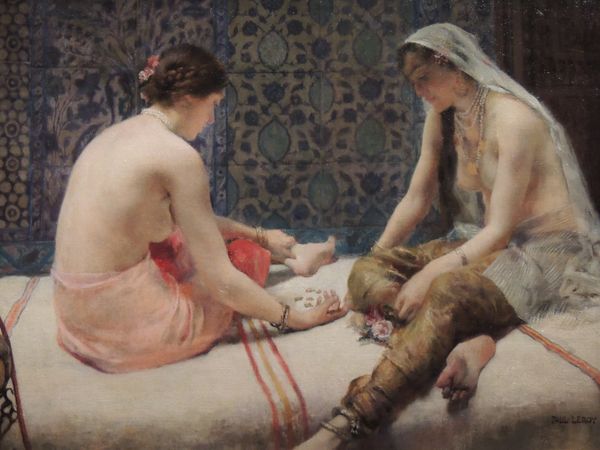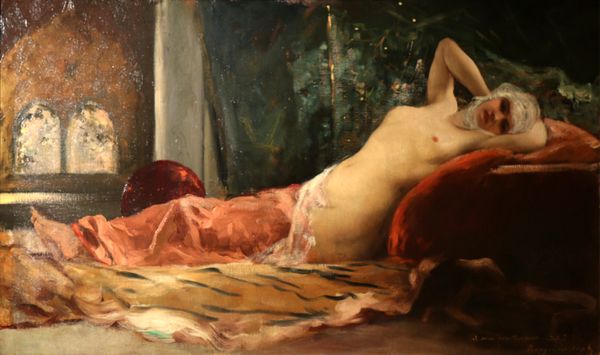
oil-paint, impasto
#
portrait
#
gouache
#
oil-paint
#
oil painting
#
impasto
#
orientalism
#
genre-painting
#
academic-art
#
realism
Copyright: Public domain
William Merritt Chase made this oil on canvas painting entitled 'The Turkish Page,' seemingly without specifying exactly when. It's a work that asks us to consider the relationship between orientalism and institutions of art in the late 19th century. Here, the trappings of the ‘Orient’ are arrayed for the viewer's consumption. Chase uses visual shorthand — a fez, jewelry, plush textiles, and the exotic bird — to signify a culture that's imagined as sensual and indolent. The painting tells us less about Turkey than it does about Western fantasies. It was a time when European and American artists often looked to the East for inspiration, but through a colonial lens. Looking at the painting, one might ask, what are the politics of such imagery? Are these depictions respectful, or do they perpetuate stereotypes? To truly understand the painting we need to delve into the art criticism of the time. What did the cultural institutions of that era value, and how did those values shape what artists created and what the public expected to see?
Comments
No comments
Be the first to comment and join the conversation on the ultimate creative platform.
